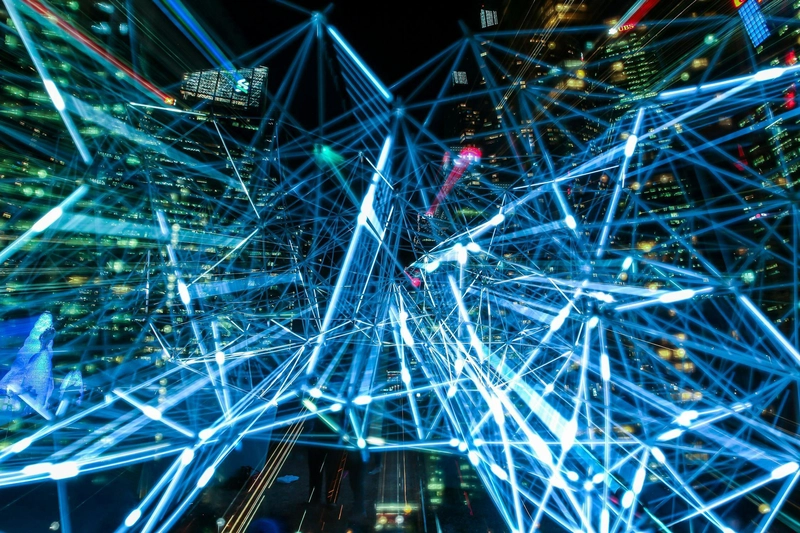Introduction
If you're new to the world of artificial intelligence, you might be amazed at how rapidly the field has evolved in just a few years. Since 2020, we've witnessed a remarkable transformation in AI capabilities, applications, and accessibility. This post aims to guide you through this evolution, highlighting key milestones and breakthroughs that have shaped the AI landscape as we know it today.
The AI Landscape in 2020: Setting the Stage
At the beginning of 2020, the AI field was already impressive but had significant limitations:
- GPT-2 (released by OpenAI in 2019) had shown promising language capabilities but was far from human-like understanding
- Computer vision models required extensive training data and struggled with unusual scenarios
- AI research was predominantly accessible only to those with substantial computing resources
- Most commercial AI applications were narrow in scope and limited in their capabilities
The foundation was set for what would become an explosive period of innovation. Let's explore how AI models have evolved since then.
The Rise of Foundation Models (2020-2021)
GPT-3: A Paradigm Shift
In June 2020, OpenAI released GPT-3, which represented a quantum leap in natural language processing:
- 175 billion parameters (compared to GPT-2's 1.5 billion)
- Ability to perform tasks with minimal examples (few-shot learning)
- Surprising emergent capabilities not explicitly trained for
- Applications ranging from creative writing to functional code generation
GPT-3 demonstrated that scaling up model size and training data could lead to qualitatively different capabilities, setting off an industry-wide race to build ever-larger models.
DALL-E: Bridging Language and Images
In January 2021, OpenAI unveiled DALL-E, which could generate images from text descriptions:
- Demonstrated the potential for multimodal AI (systems that work across different types of data)
- Showed that language models could "understand" visual concepts
- Sparked conversations about AI creativity and art
- Opened new possibilities for design and content creation
CLIP: Connecting Vision and Language
Also in 2021, OpenAI's CLIP (Contrastive Language-Image Pre-training) model showed how to efficiently learn visual concepts from natural language supervision:
- Trained on 400 million image-text pairs from the internet
- Could classify images into arbitrary categories specified by text
- Demonstrated remarkable zero-shot capabilities
- Proved more robust than traditional computer vision models
The Diffusion Revolution (2021-2022)
Stable Diffusion: Democratizing AI Art
In 2022, Stability AI released Stable Diffusion, an open-source image generation model based on diffusion techniques:
- Created high-quality images from text prompts
- Released as open source, allowing widespread use and experimentation
- Could run on consumer-grade hardware (unlike earlier models)
- Led to an explosion in AI art creation tools and applications
The New Generation of Text-to-Image Models
This period saw rapid advancement in text-to-image generation:
- DALL-E 2 significantly improved image quality and prompt fidelity
- Midjourney offered a unique aesthetic and user-friendly interface
- Google's Imagen pushed the boundaries of photorealism
- These models collectively transformed creative industries
The Chatbot Revolution (2022-2023)
ChatGPT: AI Goes Mainstream
In November 2022, OpenAI released ChatGPT, bringing advanced AI capabilities to the general public:
- Built on GPT-3.5, but with a conversational interface
- Gained over a million users in less than a week
- Demonstrated impressive dialogue capabilities
- Brought AI into the mainstream consciousness
ChatGPT wasn't necessarily a technical breakthrough, but its accessible interface and capabilities made it the fastest-growing consumer application in history at that time.
The Race for Conversational AI
ChatGPT's success sparked intense competition:
- Google responded with Bard (later renamed to Gemini)
- Anthropic released Claude
- Meta introduced LLaMA and Llama 2
- Microsoft integrated GPT-4 into Bing
- Smaller companies created specialized chatbots for various domains
This competition drove rapid improvements in capabilities, safety measures, and specialized applications.
The Multimodal Era (2023-2024)
GPT-4V: Vision Meets Language
In 2023, OpenAI released GPT-4 with vision capabilities (GPT-4V):
- Could analyze and respond to images
- Demonstrated understanding of visual content in context
- Supported more natural human-AI interaction
- Enabled new applications like visual assistance for blind users
Claude 3 and Gemini: Raising the Bar
The competitive landscape continued to evolve:
- Anthropic's Claude 3 family brought improved reasoning and multimodal capabilities
- Google's Gemini models showed strong performance across text, code, and vision tasks
- These models narrowed the gap with GPT-4 and sometimes surpassed it on specific benchmarks
Video Generation Breakthroughs
2023-2024 saw remarkable progress in AI video generation:
- Models like Runway's Gen-2, Google's Lumiere, and OpenAI's Sora demonstrated increasingly impressive video creation from text
- Quality, coherence, and duration of generated videos improved substantially
- These technologies began to impact film production, advertising, and education
The Rise of Open-Source AI (2023-2024)
The LLaMA Effect
Meta's release of LLaMA and subsequent Llama 2 models had a profound impact on the AI ecosystem:
- Provided high-quality foundation models under more permissive licenses
- Enabled smaller companies and researchers to build on state-of-the-art technology
- Sparked a wave of innovation in open AI development
- Led to thousands of specialized adaptations for various domains
The Flourishing Ecosystem
The open-source AI landscape expanded rapidly:
- Mistral AI released increasingly capable models with commercial-friendly licenses
- Projects like Hugging Face's transformers library democratized access to cutting-edge models
- Communities formed around fine-tuning and adapting models for specialized applications
- Smaller, more efficient models made AI more accessible on consumer hardware
Local AI Revolution
As models became more efficient, running AI locally became increasingly practical:
- Tools like LM Studio, Ollama, and Jan enabled desktop AI experiences
- Mobile AI capabilities expanded dramatically
- Privacy-preserving approaches gained traction
- Edge devices gained more sophisticated AI features
Technical Innovations Driving Progress
Behind the visible products, several technical innovations have powered this rapid evolution:
Reinforcement Learning from Human Feedback (RLHF)
RLHF became a crucial technique for aligning AI systems with human preferences:
- Used human feedback to refine model outputs
- Helped models become more helpful, harmless, and honest
- Reduced problematic outputs and increased usefulness
- Became standard practice for most leading AI systems
Parameter-Efficient Fine-Tuning
New techniques made adapting large models more accessible:
- Methods like LoRA (Low-Rank Adaptation) enabled fine-tuning with minimal resources
- Adapter techniques allowed specialized versions without retraining entire models
- These approaches democratized model customization
- Enabled the development of thousands of specialized variants
Mixture of Experts (MoE)
MoE architectures allowed models to grow in capability without proportional computation increases:
- Activated only relevant parts of the model for each task
- Enabled larger effective model sizes with better efficiency
- Models like Mixtral 8x7B demonstrated the approach's effectiveness
- Helped address computational sustainability concerns
The Impact on Industries and Society
The evolution of AI models since 2020 has had profound effects across various sectors:
Software Development
AI has transformed how software is created:
- Tools like GitHub Copilot and Amazon CodeWhisperer act as pair programmers
- Code generation capabilities reduce time spent on boilerplate tasks
- Debugging assistance helps identify and fix issues
- Documentation generation streamlines software maintenance
Creative Industries
Artists, designers, and creators have new AI collaborators:
- Text-to-image and text-to-video tools enable rapid visualization of concepts
- AI assistants help with writing, editing, and ideation
- Music generation and manipulation tools enhance composition
- New hybrid human-AI creative workflows are emerging
Education
Learning is being transformed through AI integration:
- Personalized tutoring systems adapt to individual student needs
- Content generation tools help teachers create materials
- AI assistants support research and writing
- New questions arise about assessment in an AI-assisted world
Healthcare
AI models are making inroads in medicine:
- Medical imaging analysis continues to improve
- AI assists with patient triage and administrative tasks
- Research tools accelerate drug discovery
- Personalized treatment recommendations become more sophisticated
Challenges and Concerns
The rapid evolution of AI has also brought significant challenges:
Misinformation and Deepfakes
As content generation becomes easier, concerns grow about:
- AI-generated misinformation at scale
- Deepfake videos that appear increasingly realistic
- Attribution and verification challenges
- Erosion of trust in digital content
Ethics and Bias
AI systems reflect and sometimes amplify societal biases:
- Training data biases manifest in model outputs
- Representation disparities affect system performance across groups
- Ethical questions about consent for training data usage persist
- Complex tradeoffs between model capabilities and safety emerge
Job Market Disruption
AI's impact on employment generates both excitement and concern:
- Some roles face automation pressure
- New jobs and capabilities emerge
- Skills requirements are rapidly shifting
- Questions about income distribution and work meaning arise
Environmental Impact
The computational demands of AI raise sustainability concerns:
- Training large models requires significant energy
- Data center expansion creates environmental challenges
- Water usage for cooling becomes a consideration
- The field increasingly focuses on efficiency improvements
Looking Forward: What's Next?
As we look to the future, several trends are likely to shape AI's continued evolution:
Multimodal Integration
Future models will likely handle multiple types of data with increasing fluency:
- Seamless integration of text, images, audio, and video
- More natural interaction patterns mimicking human communication
- Enhanced reasoning across different information modalities
- New applications leveraging comprehensive understanding
Specialized AI
While general-purpose models grab headlines, specialized AI will drive many practical advances:
- Domain-specific models optimized for particular industries
- Smaller, more efficient models for specific tasks
- Custom AI tailored to individual users and contexts
- Integration of expert knowledge into AI systems
AI Agents and Autonomy
The boundary between assistants and agents continues to blur:
- More autonomous systems that can take actions on behalf of users
- Multi-step planning and execution capabilities
- Interaction with digital and physical environments
- New paradigms for human oversight and control
Regulatory Developments
The policy landscape around AI is rapidly evolving:
- New regulations like the EU AI Act establishing rules for development and use
- Industry standards and self-regulation initiatives
- Global debates about appropriate governance frameworks
- Balancing innovation with risk management
Getting Started with Modern AI
For developers and enthusiasts looking to engage with these technologies:
Learning Resources
- Practical courses on platforms like Coursera, edX, and Fast.ai
- Interactive tutorials from Hugging Face and OpenAI
- Community forums like r/MachineLearning and Discord servers
- GitHub repositories with example code and applications
Experimentation Tools
- Hugging Face Spaces for trying models with minimal setup
- Google Colab for free GPU access for experiments
- Kaggle for datasets and competitions
- Local options like Ollama for running models on your computer
Ethical Considerations
As you explore AI, consider:
- The broader impacts of the systems you build
- Privacy and consent in data usage
- Testing for biases and limitations
- Transparency about AI involvement in your projects
Conclusion
The evolution of AI models since 2020 has been nothing short of remarkable. From GPT-3's surprise capabilities to the current landscape of multimodal systems, open-source alternatives, and specialized applications, we've witnessed a transformation that has brought AI into everyday life far faster than many anticipated.
For beginners entering this field, it's an exciting time. The tools, resources, and possibilities have never been more accessible. While challenges remain—from ethical considerations to environmental impacts—the potential for positive innovation continues to expand.
As we move forward, the relationship between humans and AI systems will continue to evolve. Understanding this history helps us better appreciate where we are and thoughtfully consider where we might go next.
What aspects of AI evolution are you most excited or concerned about? Share your thoughts in the comments below!



















Top comments (0)